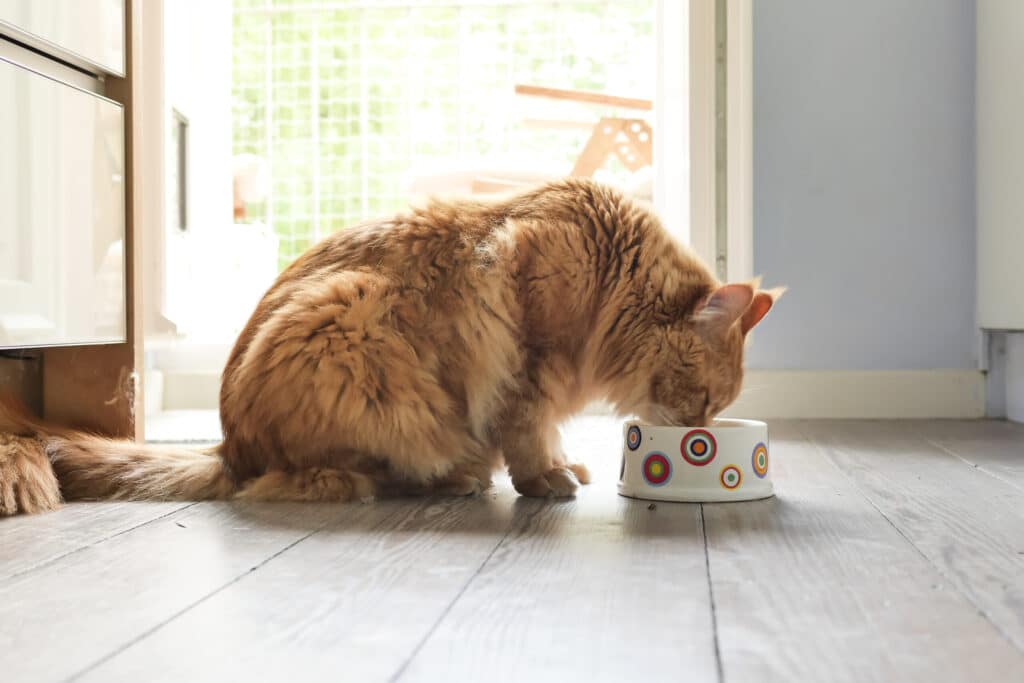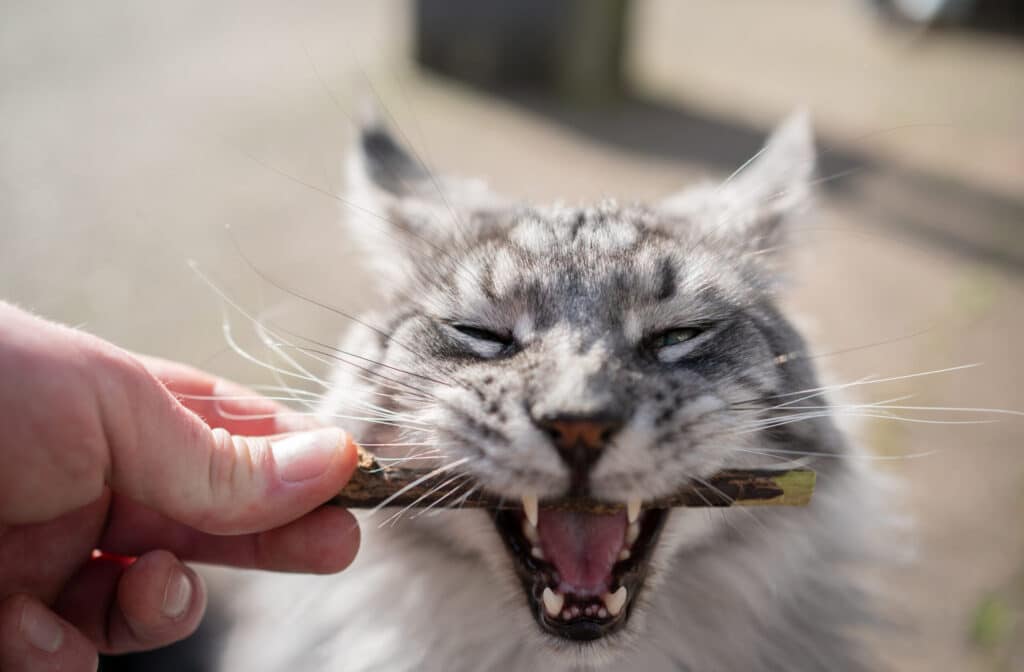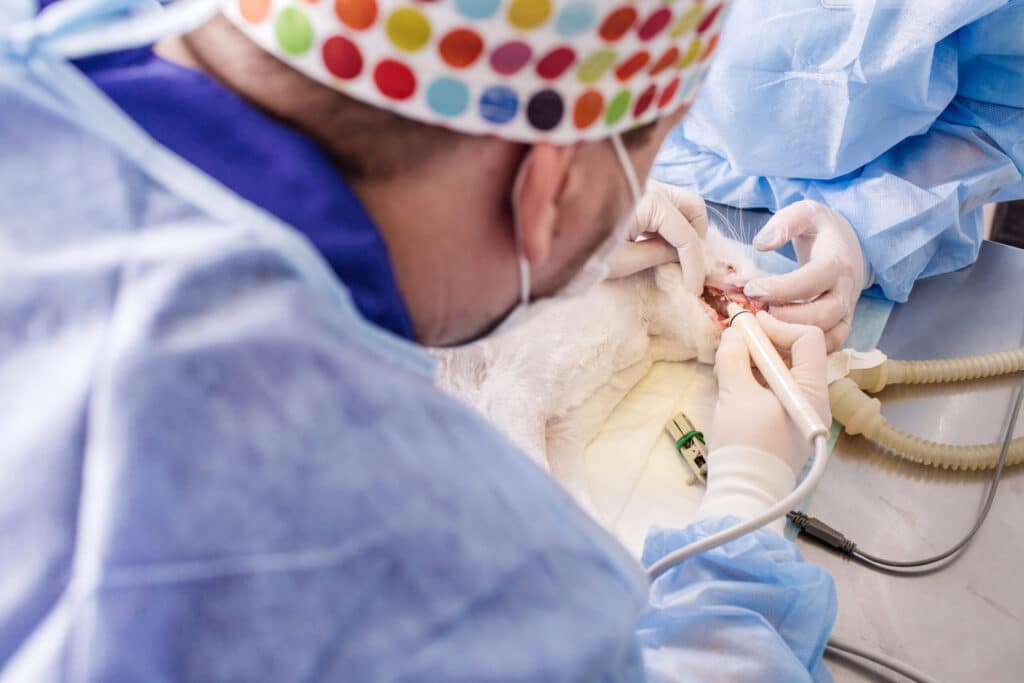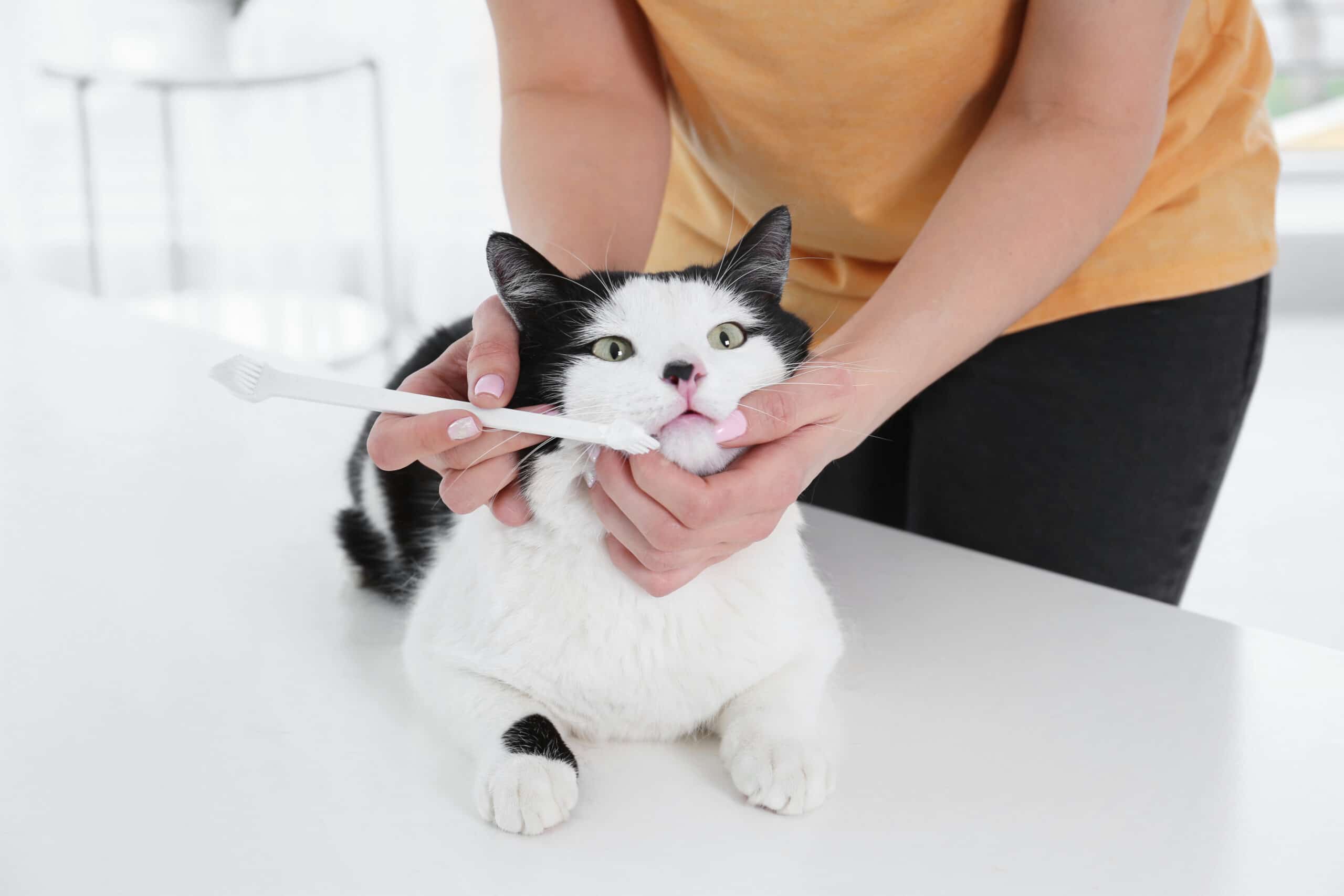Alternatives to brushing your cat’s teeth: 10 stress free options
Some cats tolerate daily tooth brushing and if you are the owner of such a gracious cat, continue to brush your cat’s teeth daily.
However, some cats will not submit to tooth brushing no matter how much you try.
If you are a pet parent whose cat doesn’t like tooth brushing, it’s time to consider alternatives to brushing your cat’s teeth.
You can discard the dreaded toothbrush and develop a new dental routine that works for both you and your cat.
Below are some of the alternatives to brushing your cat’s teeth
1. Dental gel
Dental gels are a good alternative for cats as they are not always very cooperative when getting their teeth brushed.
These gels contain an ingredient that fights germs causing tooth decay, gum disease, and tartar build-up.
Though you don’t have to use a brush, you will still have to use a finger applicator to apply the gel to your cat’s teeth.
2. Cat dental diet

Cat dental diets help to maintain good oral hygiene in your pet.
The special kibbles in the dental diet are effective in removing tartar and dental plaque.
As your cat chews his food, the rough exterior of the kibble brushes your cat’s teeth and gently removes plaque and tartar deposits.
Switching to a complete dental care diet for your cat will help in removing plaque and tartar unlike regular cat food. To understand how much food to feed your cat, check out our article on How much do you feed a cat? Everything you should know.
While dental diets are good, they should not be the only measure you follow to ensure your cat’s healthy teeth and gums.
Studies have shown that while dental diets help reduce tartar and plaque build-up, they will not eliminate the problem. Talk to your veterinarian to see what other measures need to be followed along with a dental diet for optimal results.
3. Dental chews

Since cats don’t like to have their teeth brushed, you can use dental chews to supplement your cat’s tooth care plan.
Cats generally like the taste of dental chews, which are known to be effective in keeping your cat’s breath fresh and teeth clean. You can also give dental chews as a treat to reward your cat’s good behavior.
When given regularly to your cat, dental treats and sticks will help to scrub off plaque from your cat’s teeth. They also help to reduce tartar build-up.
If you depend on dental treats to ensure your cat’s oral hygiene, make sure to have your vet examine your cat’s teeth at least once a year.
4. Dental chew toys for cats
Chew toys for cats have a rough surface similar to dental treats and can help brush off plaque from your cat’s teeth.
Some dental chew toys have a strong mesh that works like floss, scraping away tartar and plaque build-up. Chew toys are filled with catnip to get cats into chewing them.
5. Bones and tendons
Some cats like to chew on frozen bones, such as beef bones and dried turkey tendons. It is a natural way to keep your cat’s teeth clean. The chewing helps to scrape off plaque from your cat’s teeth.
6. Dental wipes
Dental wipes are also an alternative to brushing your cat’s teeth.
It doesn’t involve using a brush, but the action is similar. You will have to wrap the dental wipe around your finger and scrub it against your cat’s teeth. It takes almost the same time as brushing your cat’s teeth. This option will not work if your cat doesn’t like having your finger in his mouth.
7. Dental supplements
You can add dental supplements to food or water to remove or prevent plaque formation on your cat’s teeth.
There are many supplements available, but for best results, you should use them daily.
Some cats may not drink water if they get the taste of supplements, especially the variety with a minty flavor.
There are also supplements, which do not have any flavor. To ensure that your cat gets sufficient water, have another bowl of water available without any added supplements.
Dental supplements that you mix with food can be effective if your cat avoids water containing the supplement. Food covers the taste of the supplement.
8. Dental sprays
Dental sprays can be sprayed directly into your cat’s mouth to prevent or remove plaque formation.
You don’t have to apply the dental spray directly to your cat’s teeth; just spraying it into the mouth is sufficient. The solution will mix with saliva and get circulated in the mouth when the cat licks and swallows.
Check the package for dosage instructions. As with everything else, consistent use will give you positive results.
9. Cat oral rinse
You can use an oral rinse to help prevent tartar, plaque, and periodontal disease in cats. The alcohol-free formulation will give your cat a fresh breath and soothe any gum irritation.
You can squirt the oral rinse directly into your cat’s mouth. The unique flavor of the product should make it acceptable to your cat.
You can use the oral rinse along with the other alternatives mentioned above, especially the dental diet.
10. Get professional cleaning

Depending on the plaque and tartar build-up, your vet may recommend professional teeth cleaning for your cat once or twice a year. The procedure will usually be done under general anesthesia.
Since professional cleaning is not covered by pet insurance, you will have to plan for this yearly expense. It can cost between $150 to $450, depending on your location, your cat’s weight, and age.
Sometimes, the examination will involve a dental X-ray to see if there is any gum bleeding or food deposits in the periodontal pockets.
Your cat should have his first professional cleaning at the age of 1 to 2 years. After the first cleaning, you should go back to your vet once a year for the cleaning.
Owners of older cats are sometimes unwilling to have this procedure done because of the risks associated with anesthesia.
Though not entirely risk-free, modern anesthesia is considered safer when viewed against the risk of delaying treatment, especially if dental disease has already been detected.
Don’t forget that bacteria from an infected mouth can enter your cat’s bloodstream and affect other internal organs.
Professional cleaning involves several steps:
1. The tartar is removed ultrasonically from the teeth above and below the gumline
2. The teeth are then polished to ensure a smooth teeth surface which can help to delay plaque formation
3. The cat’s mouth is then flushed to remove bacteria and any leftover tartar from the teeth
4. In the final step, a fluoride coating is applied to the teeth to make the enamel more robust, reduce tooth sensitivity and prevent plaque formation.
Follow a practical routine
You should find a dental care routine that works best for you and your cat and stick to it.
If your cat objects to tooth brushing, you can follow a combination of the alternatives mentioned above.
Use as many of the options as your cat will allow, including dental diet, chews, supplements, and wipes.
In case your cat is suffering from gum inflammation or build-up of plaque, consult your veterinarian for an examination and cleaning. Once the cleaning is completed, you can use a combination of the options mentioned above to ensure that your cat’s mouth and teeth are in top shape.
How to tell if your cat has tooth pain?
Cats are very good at hiding their discomfort, so it can be challenging to know if your cat is suffering from tooth pain. Some telltale signs of dental disease or distress due to tooth pain include:
- A cat with tooth pain may avoid drinking water or eating
- See if your cat is eating slowly than normal
- See if your cat is showing a preference for wet food or dry
- Observe to see if your cat is chewing on one side
- Is your cat more irritable than usual?
- Is your cat hiding a lot?
- Is your cat showing less affection than normal?
Conclusion
If you don’t care for your cat’s teeth, the build-up of food debris and bacteria can lead to infection and inflammation in the mouth. The infection can also enter the bloodstream through the blood supply in the gums and affect your cat’s heart, liver, and kidneys.
Besides affecting your cat’s internal organs, dental disease can cause the teeth to be infected and break. You may have to get the teeth extracted, or they may fall off.
Dental disease can lead to bad breath and drooling as well. By simply paying attention to your cat’s dental health, you can prevent all of these problems from happening.
If you have a cat that refuses to accept dental care at home, you will have no choice but to schedule regular cleaning sessions with your vet. You may have to visit your vet at least once in six months for an examination and see if cleaning is required.
Don’t hesitate to seek professional help to preserve your cat’s dental health, as it is essential to ensure the overall good health of your cat.






